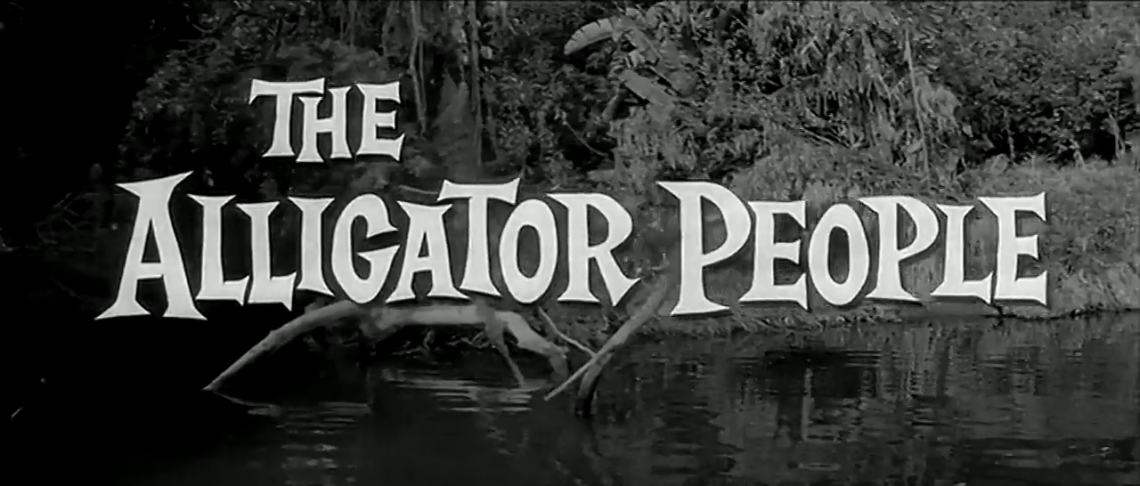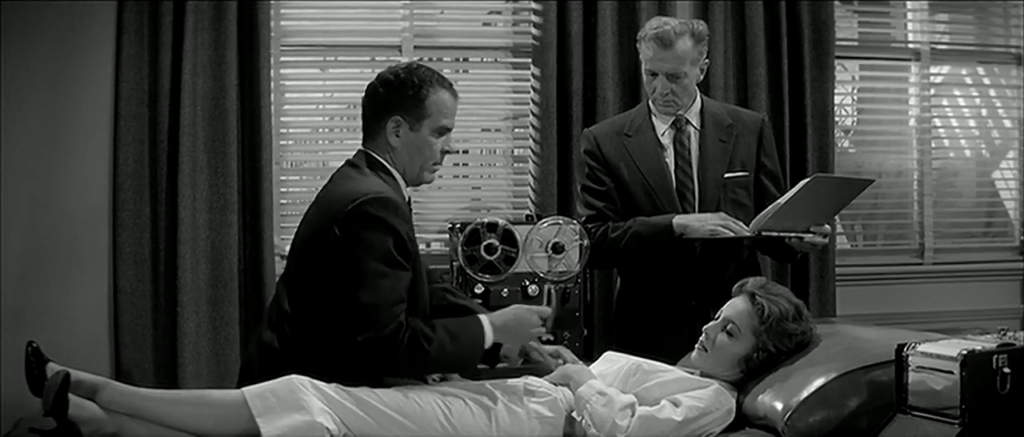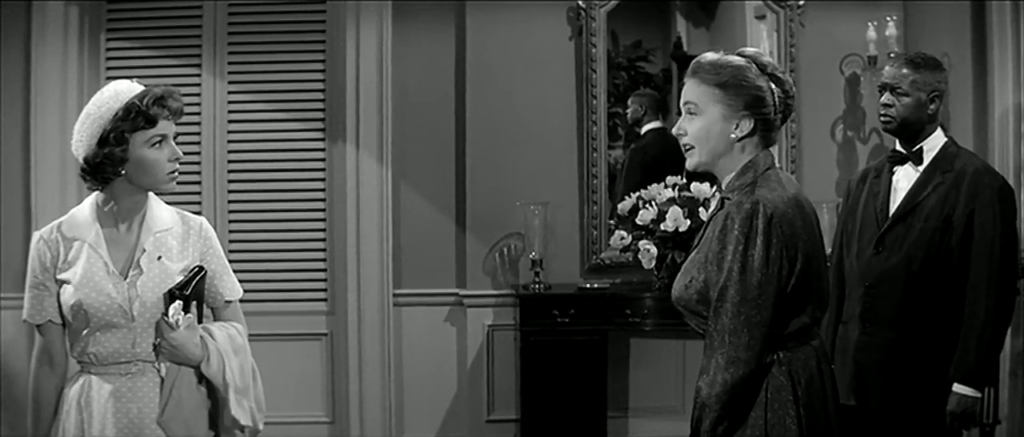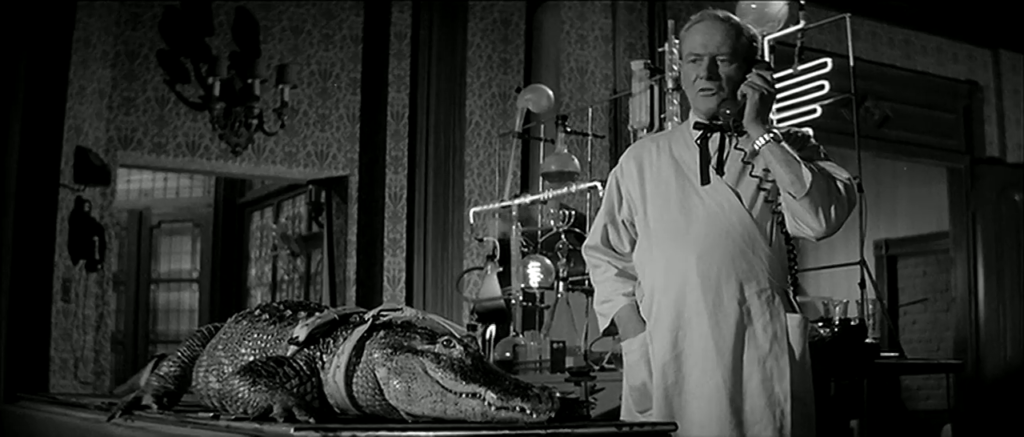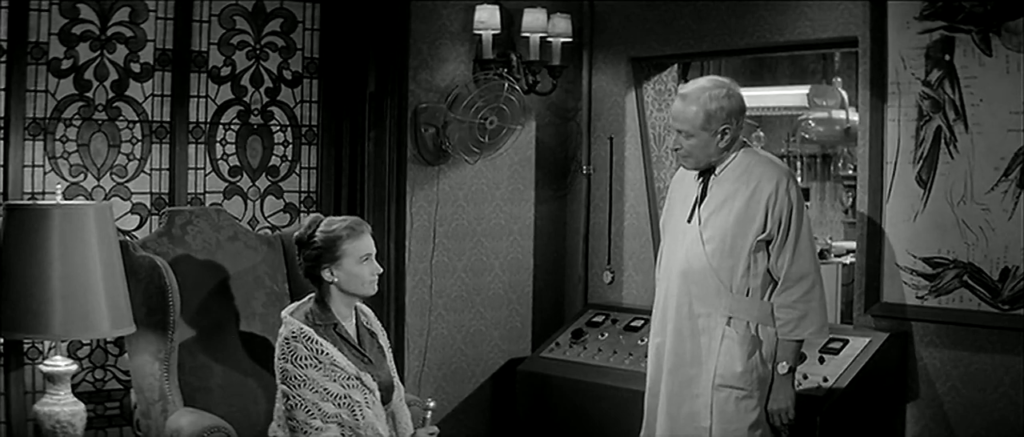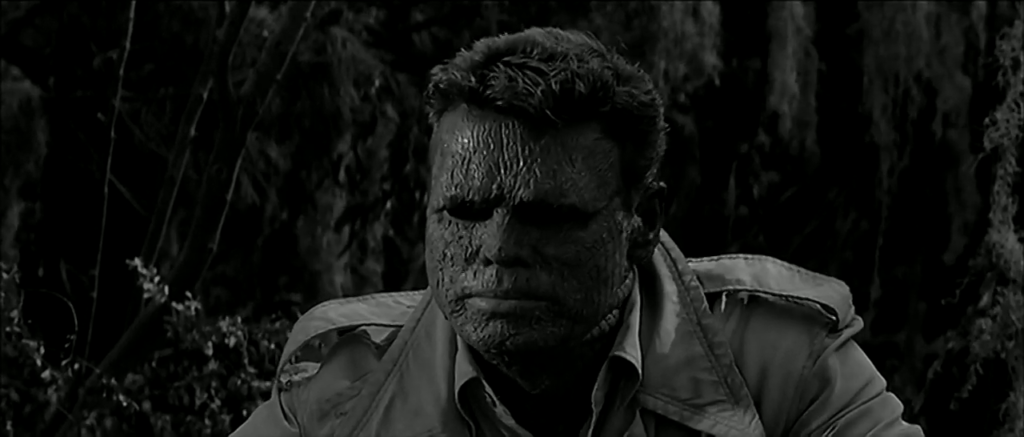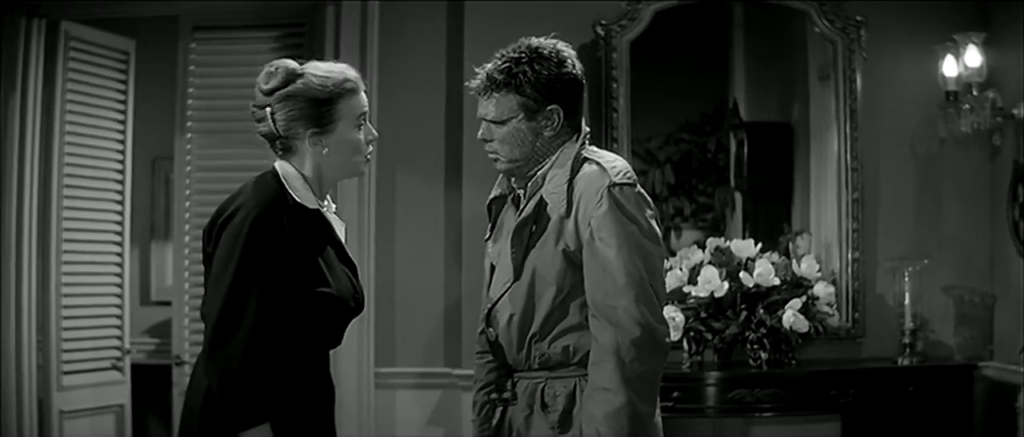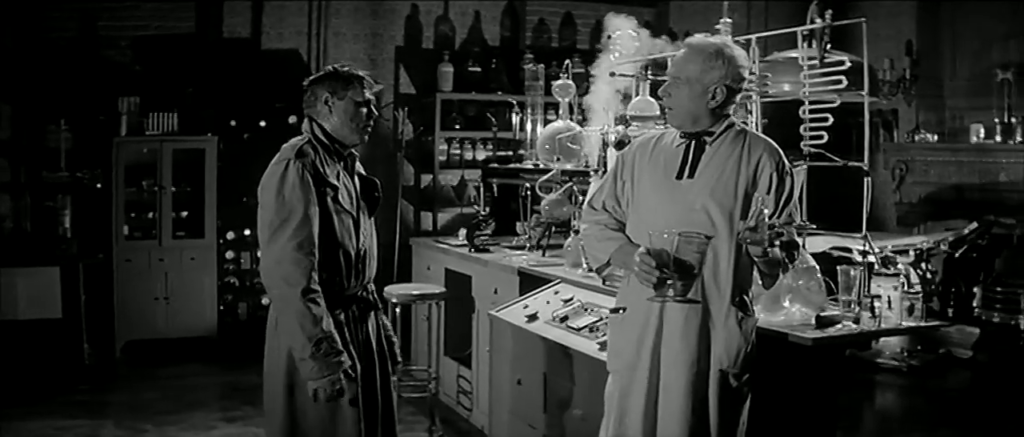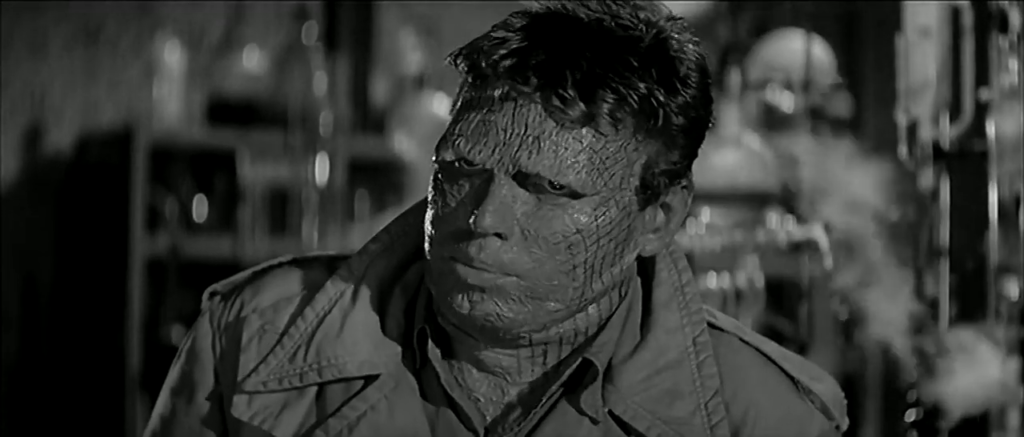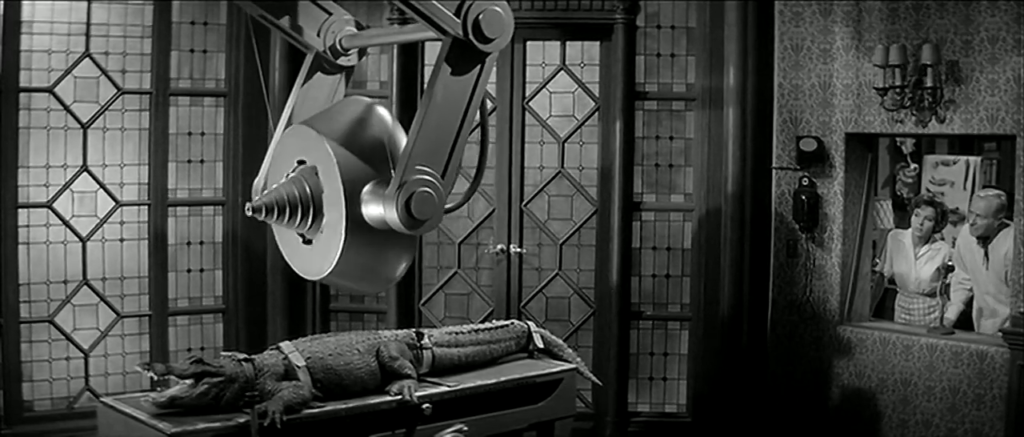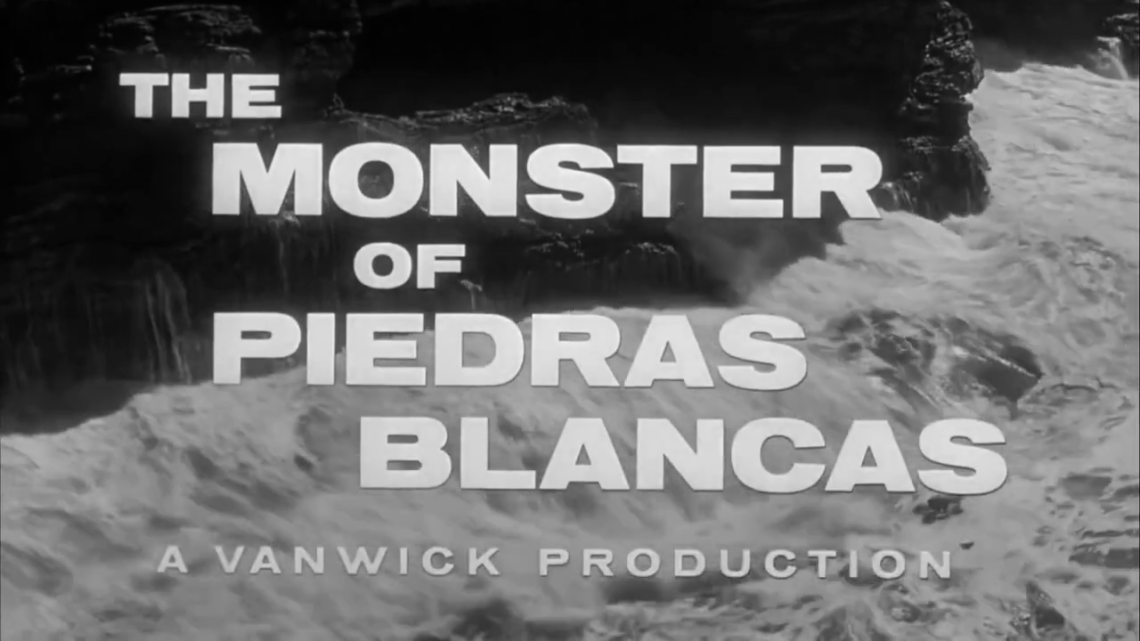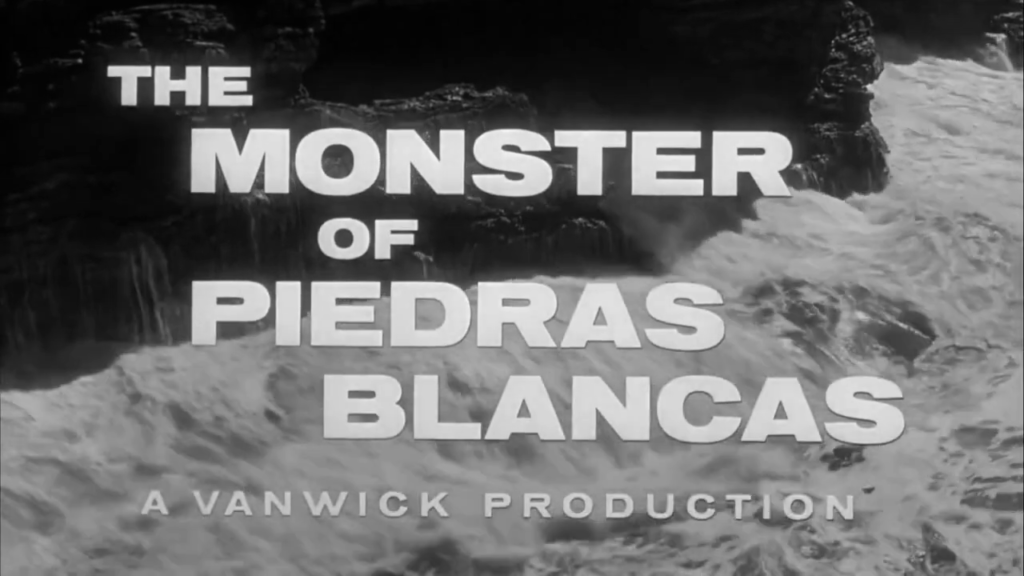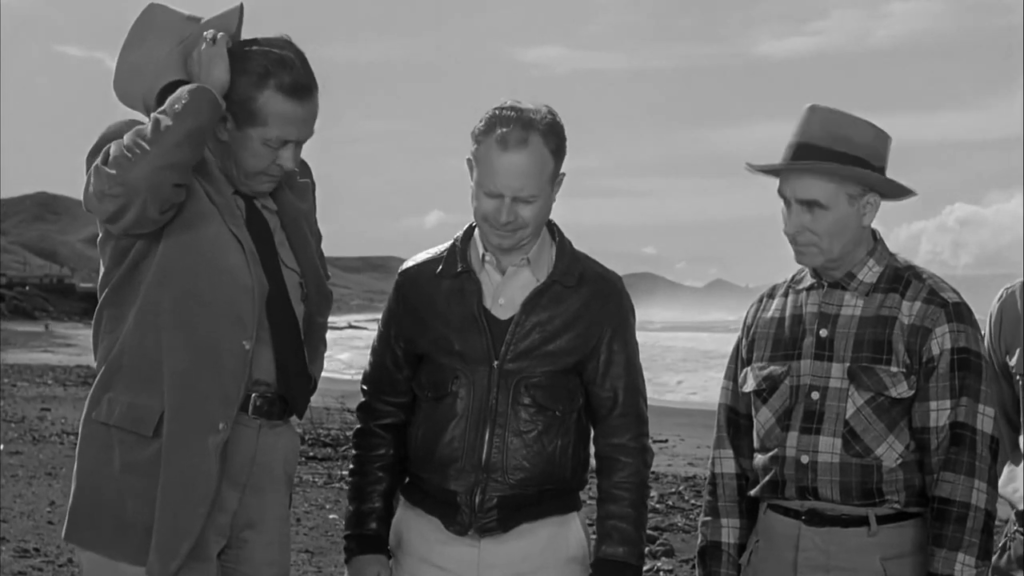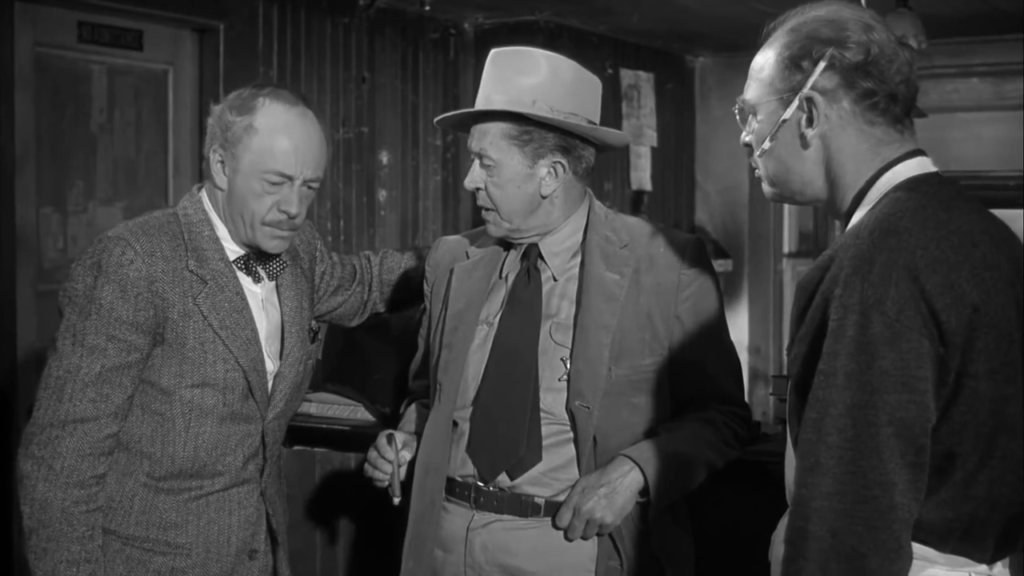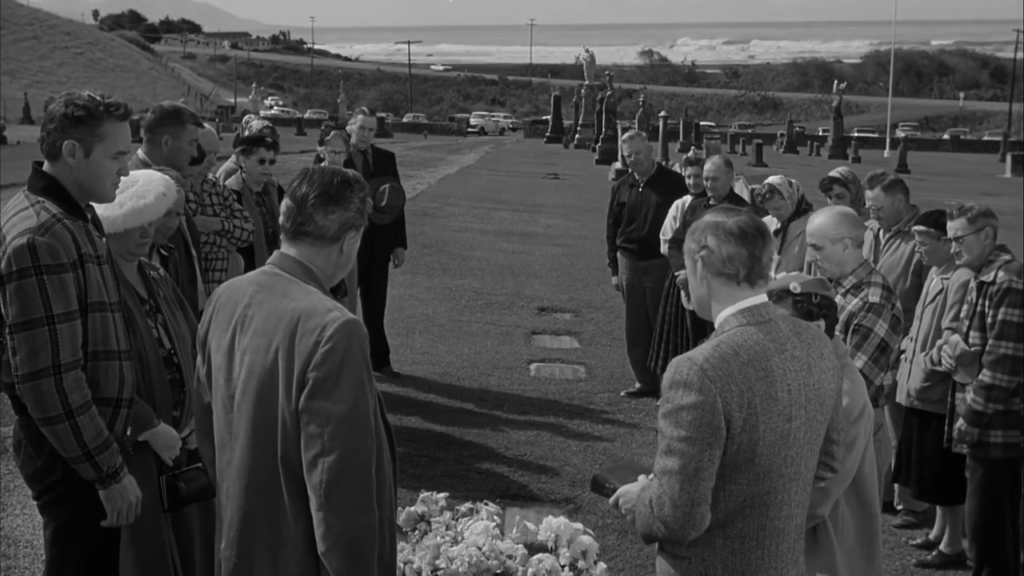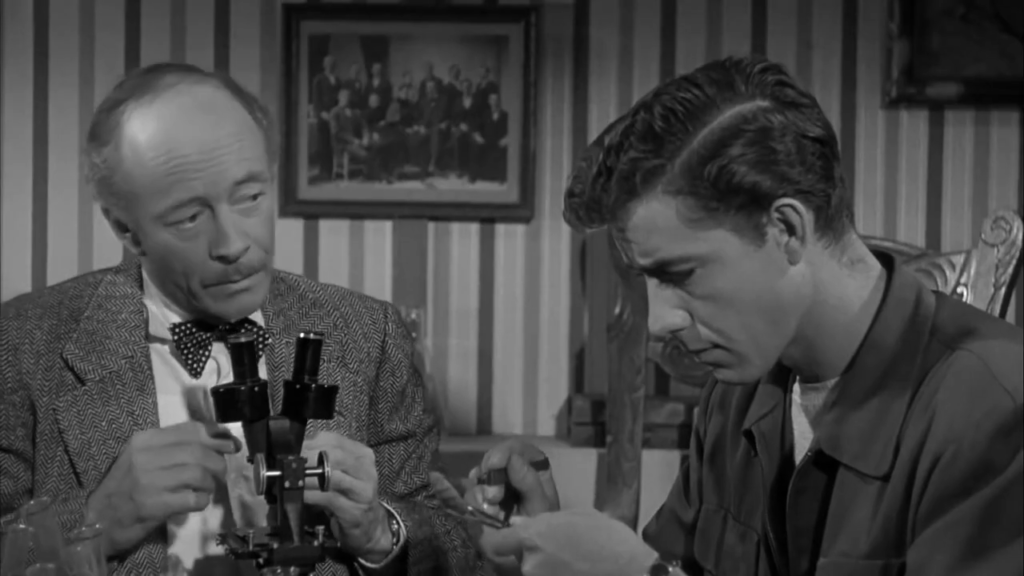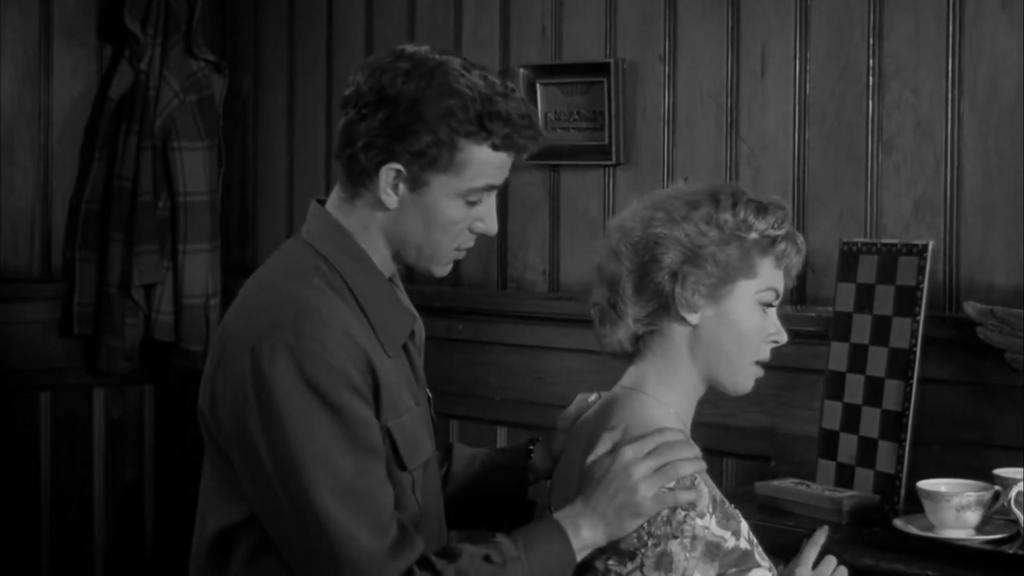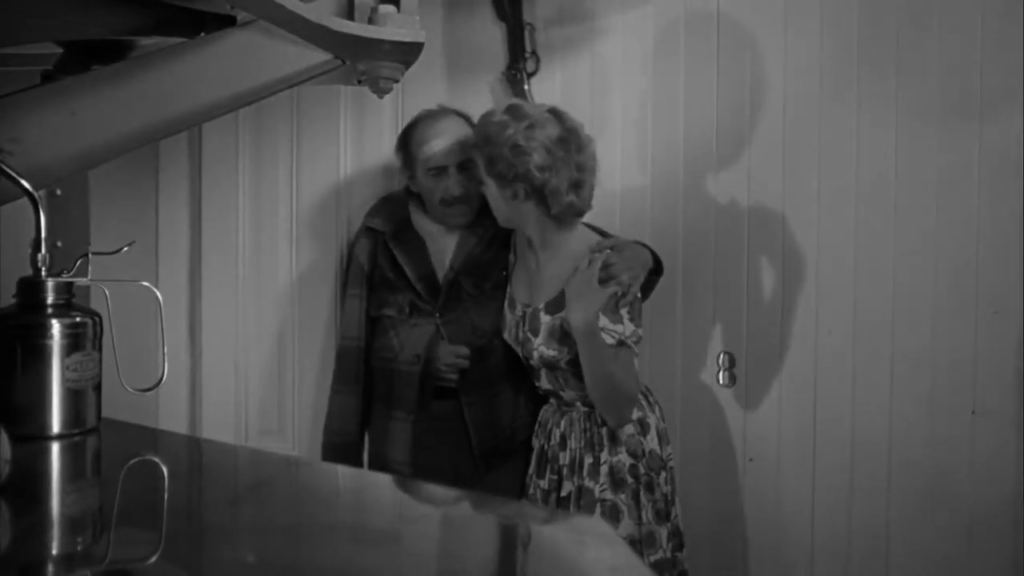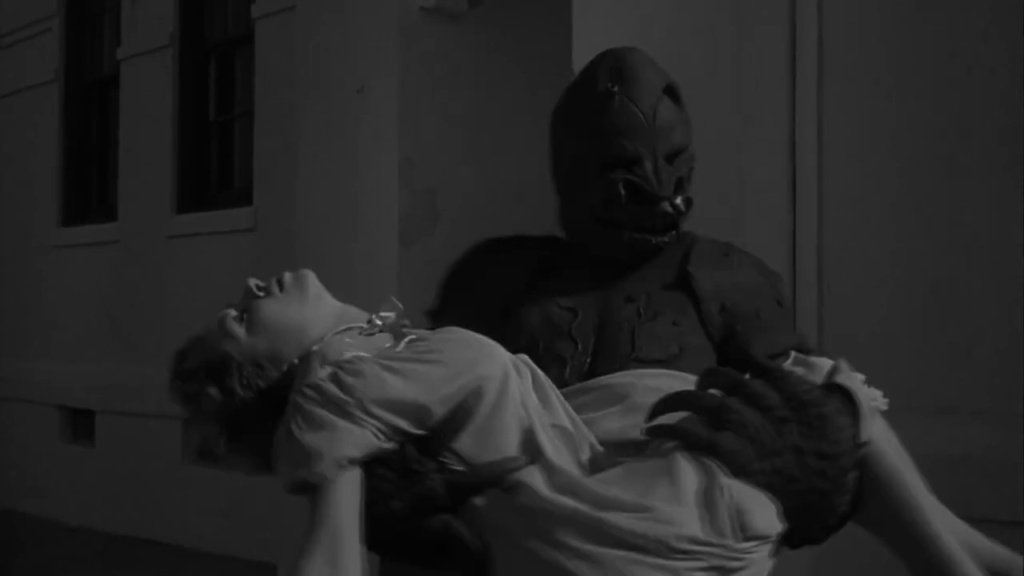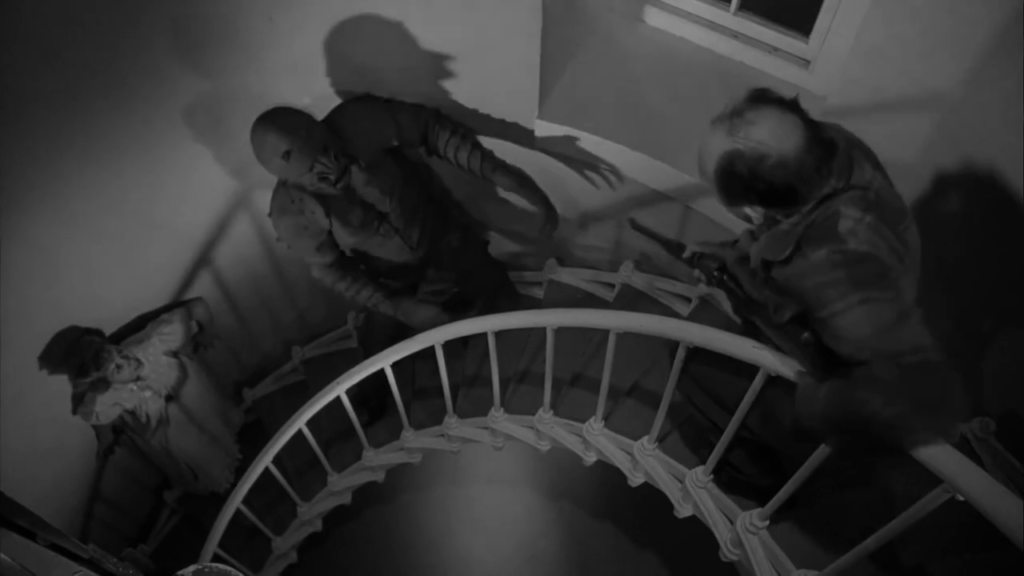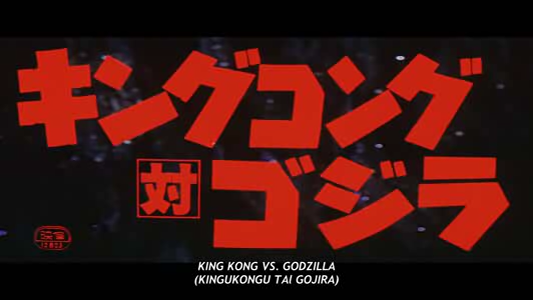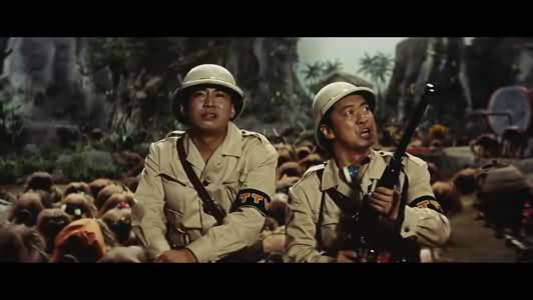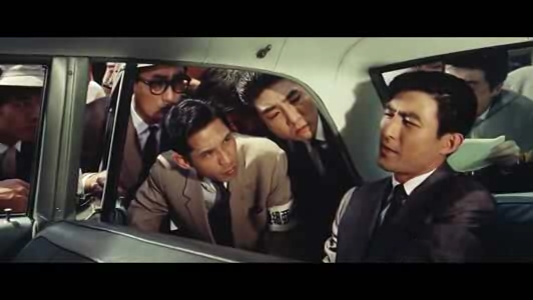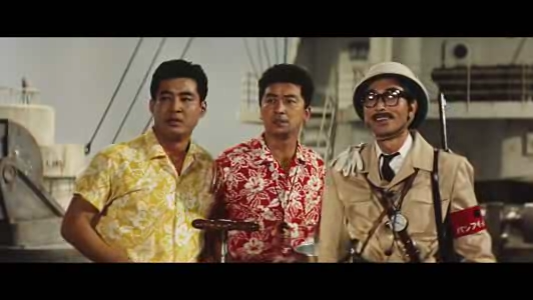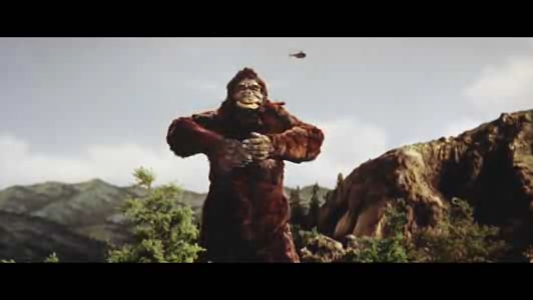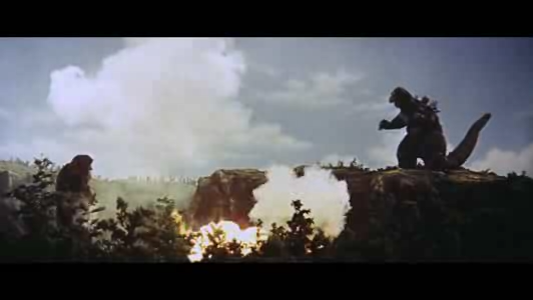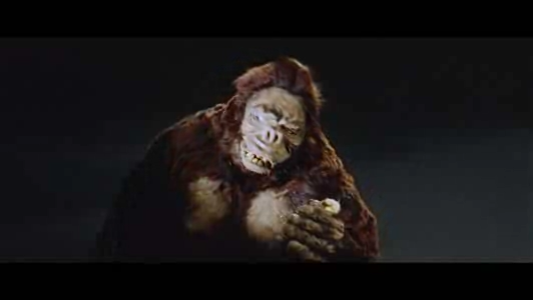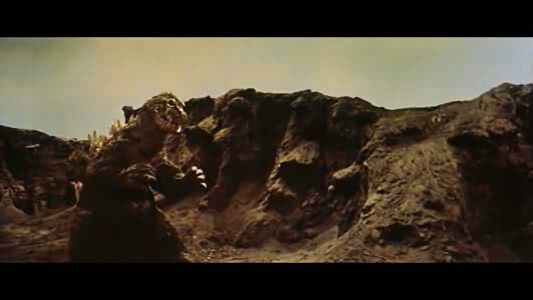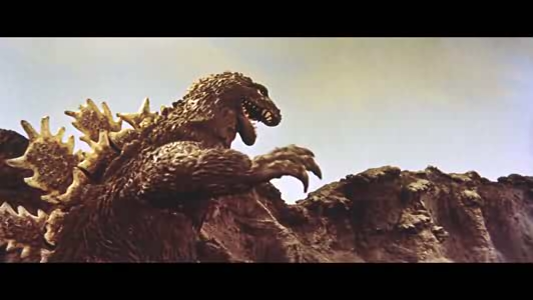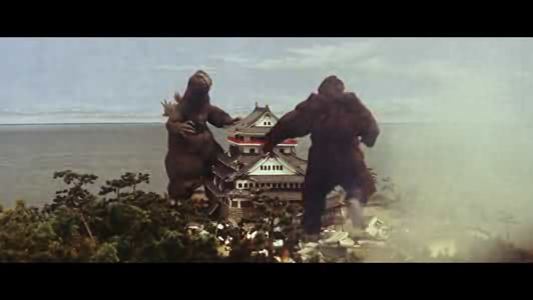-
#491 – The Alligator People (1959)
The Alligator People (1959)
Film review #491
Director: Roy Del Ruth
SYNOPSIS: Newly-wed couple Joyce and Paul Webster are aboard a train on the way to their honeymoon when Paul receives a telegram that disturbs him, causing him to get off at the next stop and vanish, leaving Joyce on her own. She relentlessly pursues any clues about where her husband may have gone, leading her to a plantation in Louisiana, which he once registered as his college address. There, she suspects that there may be some answers to her questions, but everyone seems to think otherwise…
THOUGHTS/ANALYSIS: The Alligator People is a 1959 sci-fi horror film. In the opening, we see nurse Jane Marvin undergoing a treatment to cure her amnesia. While in a sedated state, she recalls to the supervising doctors the plot of the film: Joyce (as she was then known) had just got married, and they were on the train for their honeymoon, when Paul receives a telegram. Paul seems shaken by the contents and gets off the train at the next mail stop and disappears without explanation, leaving his new wife lost and confused about what happened. Joyce spares no effort in tracking him down, but the only clue she is able to find is an address he gave when he enrolled at college for a plantation in Louisiana, and so Joyce heads there to try and get some answers. The story of the film is honestly pretty well done: everything is contained, flows nicely, the twists are decent, and the explanations and justifications for everything that happens make sense. However, it is still a b-movie from a time when these types of films were cranked out en masse, and so it fits into a category in which things are expected to be a bit cheap and unoriginal. It’s executed better than some of the B-movies I’ve seen, but I think the problem is that it’s still not a very interesting setup. The horror element of the film doesn’t really meet expectations, as the “Alligator people” from the title turns out to be just one person, who is fairly humanised so as to not be portrayed as much of a threat.
The female lead provides a more original twist on the b-movie film, and her inquisitiveness and relentless pursuit of answers concerning her husband is one of the strong points of the film. Unfortunately, there are also moments where she becomes a more typical “damsel in distress,” and the film doesn’t seem to know how to break out of these archetype completely, and her character jumps can go between these two poles very suddenly and awkwardly. The rest of the cast have particular roles to play that, again, while they’re nothing special, fulfil their purpose well. There’s no real gaps in the story or characters which would disrupt the viewing experience, which is pretty rare in a b-movie like this.
The “alligator person,” when their face is finally exposed, is a scaly and deformed result of an experiment designed to harness the limb regeneration of alligators and apply it to humans (again, the explanation works pretty well). The makeup is okay, and not too distracting. When he finally transforms fully into an alligator human hybrid, the results are much worse, as it is clearly a guy in an alligator mask. Apart from that, the execution and production of the film are generally good, with the photography and camera setups working well, and scenes having a good level of detail. Overall, The Alligator People is a decently executed film that ties its characters and plot together well. The main problem is that it’s just not that interesting, and in terms of b-movie monsters, it’s just not as memorable or terrifying as others. It’s definitely better than many B-movies I’ve seen, but a bit of a bore.
-
#489 – The Monster of Piedra Blancas (1959)
The Monster of Piedras Blancas (1959)
Film review #489
Director: Irvin Berwick
SYNOPSIS: The quiet Californian town of Piedras Blancas hides a dark secret: in the caves beneath the lighthouse, there hides an ancient monster that starts killing the residents of this sleepy town. Unaware of the monster’s existence, a number of the residents try to find out what is causing the killings…
THOUGHTS/ANALYSIS: The Monster of Piedras Blancas is a 1959 sci-fi horror film. Set in the small lighthouse town of Piedras Blancas in Southern California, the residents of the town find themselves being killed off one by one, with no idea who…or what is doing it. The film is paced like a typical monster movie of the time, with very little momentum at the beginning, and various murders until the monster’s reveal. The pacing is very slow in this one, and we only get the reveal of the monster about two-thirds of the way in, and everything before just involves these cast of characters that do little to distinguish themselves. The dialogue is pretty dull, and the character development doesn’t help make things exciting. I suppose this dullness reflects the setting of this sleepy seaside town, but it doesn’t really make for an interesting movie.
The film is an independent production, so it doesn’t have the backing of the big studios, but then again, those same studios were cranking out films like this at about the same quality, and the same runtime just over an hour long (this runtime was typically suitable for being shown at drive-in cinemas as part of double features, that were popular at the time). As such, it’s rather indistinguishable from a more ‘mainstream’ production. The on-location shots of the cliffs and the town do give it a more authentic feel instead of just relying on sets, so it does have that going for it. The cast of characters can easily be remembered by their roles, and their names are somewhat irrelevant: you have the doctor, sheriff, storekeeper, lighthouse keeper and the young couple. Each of them, as mentioned, fills out a fairly predictable role, and adds very little to proceedings. The young woman manages to show a lot of skin fairly regularly (even going swimming in the sea naked at one point), which would have been a little risqué at the time, and not something I’m sure a bigger production could have gotten away with.
The most notable aspect of this film is definitely the monster itself. Very similar in design to “The creature from the black lagoon,” (and designed by the same creator), the monster is based on a diplovertebron, which was a prehistoric creature that lived over three hundred million years ago. We don’t get too many shots of the creature in it’s full glory, but when we do it looks fairly decent for the time, with a scaly skin and water oozing out of its mouth. One of the other most memorable aspects of the film is the use of gore. In most Hollywood films, the killings would be done offscreen or without any blood or viscerality. When we get the full reveal of the monster, he is carrying the bloody decapitated head of his latest victim, which certainly comes as a shock, since nothing else has happened in the film up to that point, and also you just don’t expect to see that kind of gore in these films; also, the effect looks pretty convincing too. We get another shot later on of the abandoned head being walked over by a crab which is also has the same effect, but apart from that, there’s not too much to say about this film. The Monster of Piedras Blancas is a fairly forgettable film save for one or two moments that show off its horror credentials. It’s fairly short runtime means you can probably check it out without too much fuss though.
-
#338 – King Kong vs Godzilla (1962)
King Kong vs Godzilla (1962)
Film review #338
dir. Ishirō Honda
SYNOPSIS: Pacific Pharmaceuticals are having trouble coming up with some successful advertising. Mr. Tako, the head of the company, is told about a monster that exists on a remote island, and sends Sakurai and Kinsaburo, two of his employees, to capture it so he can use it as the new mascot for the company. However, another monster appears: Godzilla is back and goes on the rampage, and a plan is devised to bring Godzilla and this new monster, King Kong, together in the hopes they destroy each other before they destroy everything else…
THOUGHTS/ANALYSIS: King Kong vs Godzilla is a 1962 monster film and the third film in the Godzilla series. Given that King Kong is a Hollywood character, and Godzilla a product of Japanese cinema, this film is a true crossover of east vs west. The film starts off showing the failed marketing of Pacific Pharmaceuticals, and their boss Mr. Tako tearing his hair out trying to get attention for the company. A doctor tells Mr. Tako about a remote island in the South, where an indigenous tribe worships some kind of monster. Mr. Tako somehow concludes that getting this monster to advertise his products as a mascot would lead to the company dominating TV ratings, and so sends to marketers Sakurai and Kinsaburo to the island in order to capture the monster and bring it back to Japan. This monster turns out of course, to be King Kong, and the opening act of the film focuses on his origin story. It’s pretty similar to earlier incarnations in that King Kong is worshipped as a God by an indigenous tribe, who make various offerings to him. The film slowly builds up to his appearance then engages in a fight scene with a giant octopus (really just a regular-sized octopus on a model set), which establishes King Kong’s strength and showcases his power before the inevitable meeting with Godzilla. It doesn’t add much to the character of King Kong, but it doesn’t need to: some characters just don’t need to be more complex or have a motivation to smash stuff.
When King Kong is sedated and on the way back to Japan, Godzilla awakens from being trapped in ice, and heads off on the rampage. The Japanese Self Defense Force tries a number of operations to try and stop it, but all of them fail. The only option left to them is to get King Kong and Godzilla to meet and destroy each other. It should be noted that the whole tone of this film is a lot lighter than the previous two Godzilla films. The story being based around using these monsters in a war for TV ratings shifts the focus from the horrors of the destruction to more of a satirical look at human’s and corporation’s response to tragedy to use it to maximise attention and ratings. This ultimately makes the film a bit more goofy and silly than the original two films, which were very dark, and had powerful messages about Japan’s relationship to destruction and nuclear technology in the aftermath of the Hiroshima bomb. It’s not a bad move that the film takes, it’s just something different, and it is the direction the film series takes after this one to appeal more to younger viewers. Again, we get the basic plot points of King Kong condensed into this film, with him being captured, breaking loose, and going on a rampage in a city, while kidnapping a woman and climbing a tall building. The people that made this film clearly wanted to tell King Kong’s story in full, but also in their own way, making him feel almost at home in the setting of Japan, by which I mean trashing their cities…
When we eventually see King Kong and Godzila face off, Godzilla manages to overcome King Kong easily thanks to his atomic breath meaning King Kong cannot even get close. In their second meeting, King Kong fares better thanks to having absorbed electricity form power lines and an oncoming lightning storm: it is hinted that King Kong has the ability to summon storms and has an affinity with lightning, but it’s not explained very well. So while King Kong eventually emerges the winner in the end, Godzilla gets a victory as well, so it should satisfy both fans. Apparently King Kong was even more popular than Godzilla in Japan at the time, so having him win at the end obviously satisfies more people. The monsters are played as in previous Godzilla films by men in suits rampaging over model sets. The suits look decent, and the fighting is carefully choreographed, but does get a little silly at points, such as when they’re throwing rocks at each other. Some of the plans to deal with Godzilla are very cartoon-ish too, such as literally digging a pit and covering it up, so that Godzilla will fall down into it. Also airlifting King Kong by tying balloons to him looks pretty silly.
This is the first time we have seen Godzilla and King Kong in colour, since their previous films were in black and white too, and the addition of colour definitely makes them look less threatening anyway. One thing that stands out is Godzilla’s big eyes that are almost cartoon-like, whereas King Kong looks extremely messy and primal, which sets up a good contrast between the two. The effects are pretty decent, but there’s not as much destruction as the previous films, probably because over half the film’s budget went to securing the rights to use King Kong in the film. Overall though, while it is a little different in tone to previous Godzilla films, it changes things enough to keep it fresh, and is structured well to tell the story of two monsters alongside giving ample screen-time to both. Some people may not like the goofy human stuff, but all in all it’s a decent offering.
